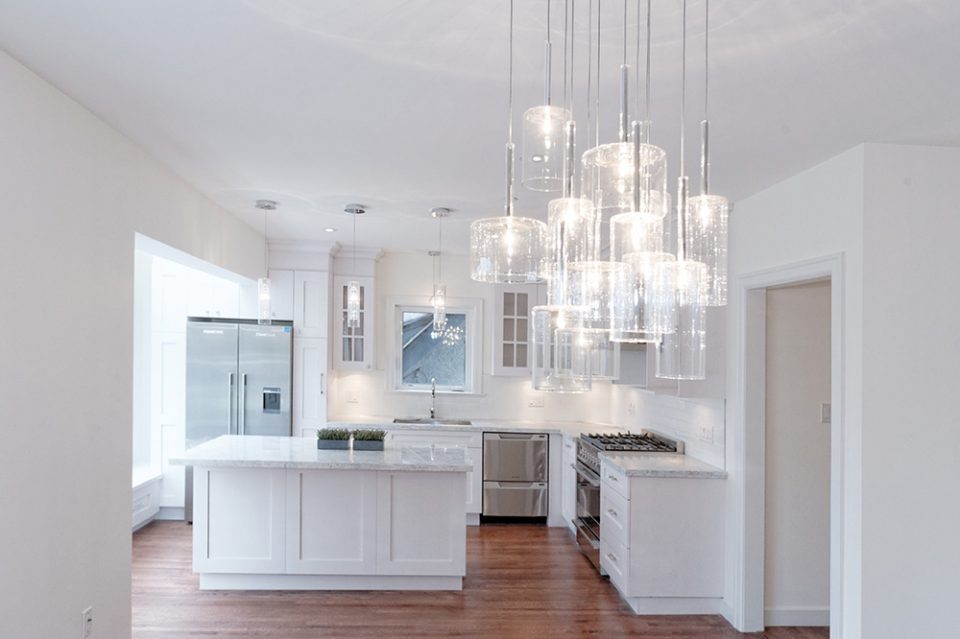
Planning a home renovation? Getting the right lighting for your home can have a huge impact not only on style but also function. Depending on the room, your lighting is going to change – you’re not likely to use the same lighting solutions in your kitchen as your bedroom, for example. Additionally, there are so many available lighting options today – from chandeliers and pot lights to LED lights and hanging lights, there are many factors to consider when choosing lighting for your home. Let’s have a closer look at some of the most important considerations so you can learn how to pick lighting for your home.
Types of Lighting
First understand the basic types of lighting – ambient, task, and accent lighting. Sometimes you’ll mix and match different types of lighting in a room. Ambient lighting is your primary light source – two of the main examples in homes are overhead or recessed lighting fixtures. You’ll want to consider how much light you’ll need in a room depending on its function. Kitchens and bathrooms usually have more ambient light than bedrooms, for example.
As the name implies, task lighting provides adequate light for specific tasks. When you’re watching TV, applying makeup, or reading a book, you’ll probably benefit from some task lighting. Table lamps or a mirror lights are both examples of task lighting. They can increase lighting in a specific area, but can be deactivated when they’re not needed.
Finally, accent lighting represents a style choice. You may use accent lighting to highlight your favourite art or a specific feature of your home. For example, accent lighting may be installed around a fireplace so you can accent pieces on the mantle.
Types of Fixtures
Next, it’s important to understand that there are many different lighting fixtures. From sconces and flush mounts to lamps and chandeliers, different types of lighting fixtures will often serve different purposes. Sconces are mounted to your wall and usually act as accent lights. Flush and semi-flush mounts are usually installed in the ceiling and provide ambient lighting. Chandeliers and lamps are usually design features that may provide both ambient light and accent lighting. You can probably even remember using desk lamps as task lighting.
Lighting for Space
Finally, consider the space you are lighting when trying to pick the right lighting for your home. Entryways generally benefit from brighter, ambient light mounted in the ceiling. For more flexible design, living rooms are well-suited to ambient light from floor lamps and table lamps. Consider installing a dimmer switch in the living room for more control over lighting. Dining rooms should feature a balance of light – enough for eating and chatting but not offensively bright. A chandelier or mounted fixture over the centre of the table is traditional. In the kitchen, consider pairing ambient lighting with task lighting where you do most of your kitchen work. For your bedroom, a softer, ambient light with a couple of lamps for task lighting are great ideas; but for the bathroom, you need a lot of light. A variety of sources allows you to add more light as needed – and don’t forget task lighting for your grooming tasks.
